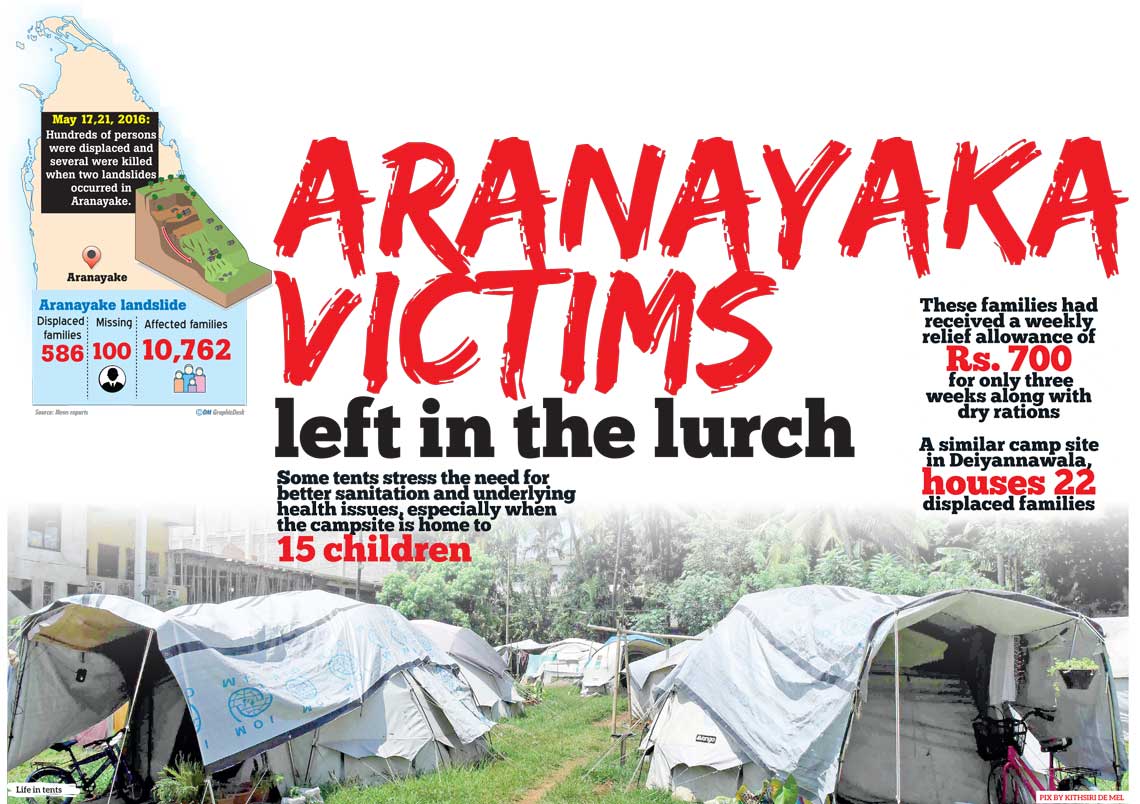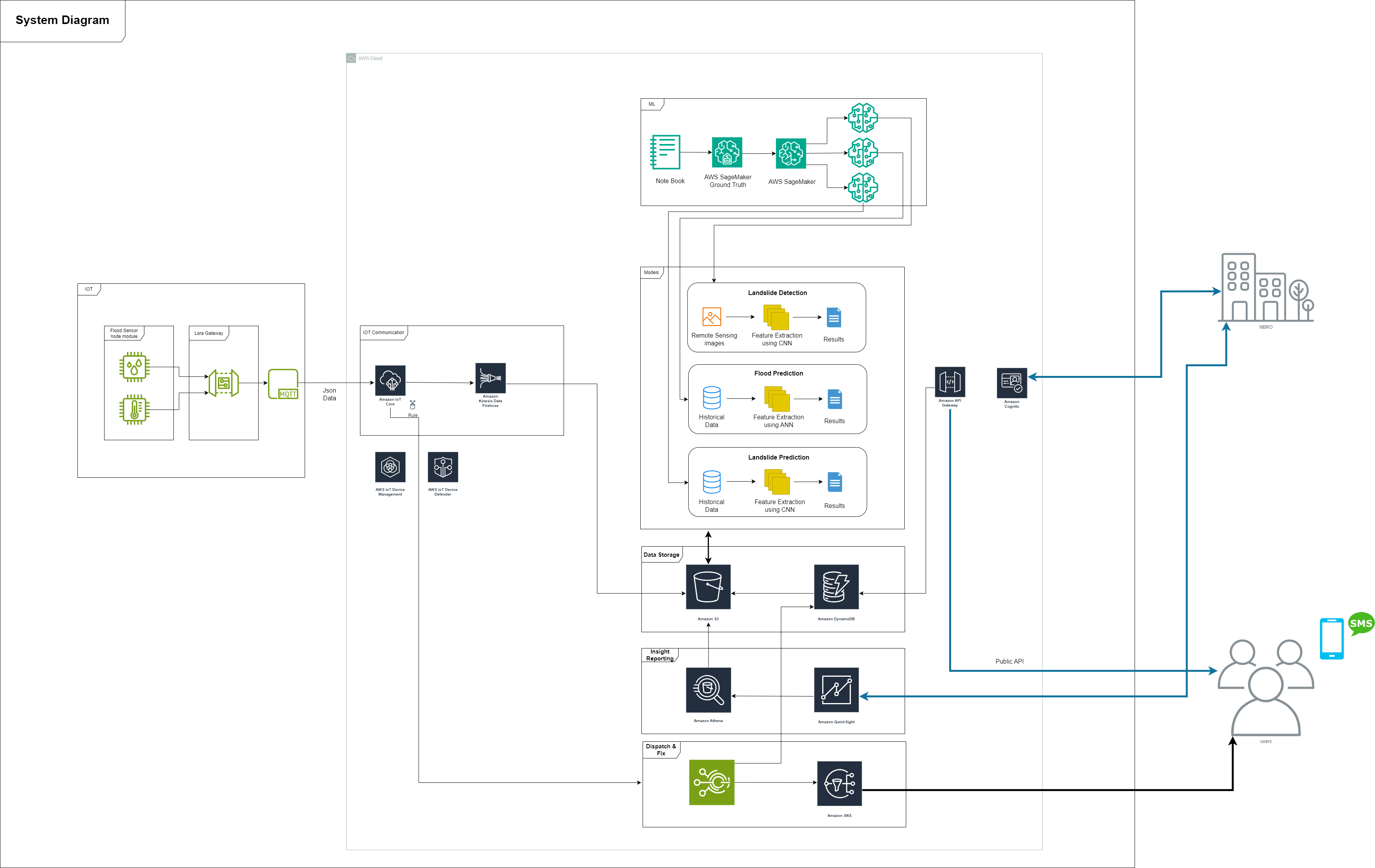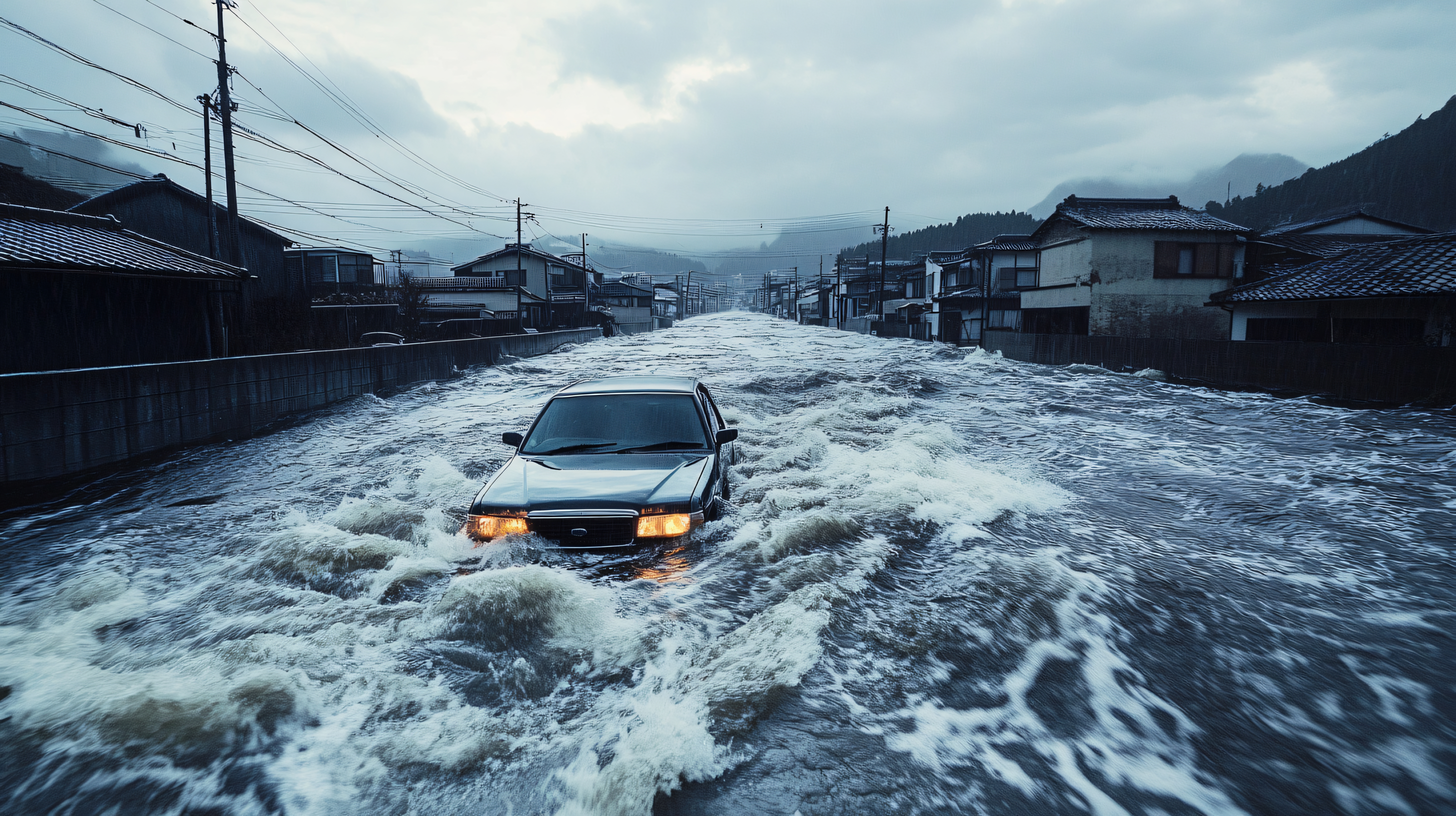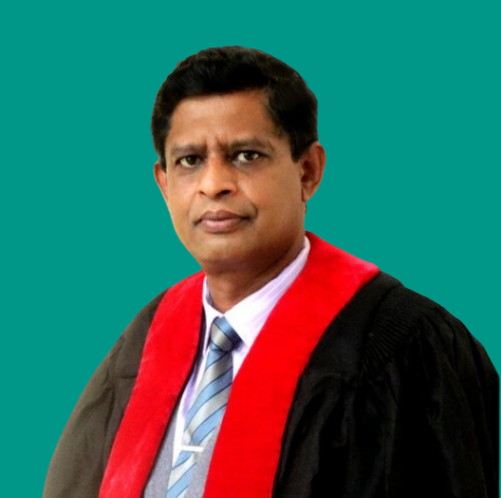Project Scope
Literature Survey


Figure 1. News Headlines of a flood Occurence
Sri Lanka frequently experiences floods and landslides, which pose serious risks to public safety, infrastructure, and the economy. Flooding, driven by heavy rainfall, disrupts key sectors such as transportation and agriculture, while landslides in mountainous areas damage homes and block roads. The tragic 2016 Aranayake landslide, which claimed many lives, underscores the need for more reliable and effective disaster prediction systems.
Currently, disaster management in Sri Lanka relies on traditional methods such as static data analysis and Geographic Information Systems (GIS) to assess risk areas. While these approaches provide valuable insights into historical patterns, they often fall short in predicting the dynamic nature of disasters in real time. This results in slower response times and less precise risk forecasts, particularly in rural and remote regions.
To overcome these limitations, new technologies like machine learning and IoT sensor networks offer transformative potential. By utilizing real-time data from sensors monitoring rainfall, water levels, and soil stability, predictive models can continuously update risk assessments, allowing for more accurate and timely forecasts. This integration of advanced technology would enhance early warning systems, facilitate quicker evacuations, and significantly reduce the impact of floods and landslides on communities and infrastructure.
Research Gap
Following areas are the research gaps found in most of the recent researches.
1. Sensor Accuracy and Data Transfer: Current disaster prediction tools face challenges with poor sensor accuracy and unreliable data transfer, especially in remote areas with weak cellular networks.
2. Integration of Modern Technologies: There is a need for better integration of machine learning (ML), artificial intelligence (AI), and Internet of Things (IoT) technologies to enhance disaster prediction and management systems.
3. Scalability and Flexibility: Existing systems lack the scalability and flexibility required to be effectively applied in different geographic and infrastructural contexts, particularly in regions similar to Sri Lanka.
Research Problem & Solution
Proposed Problem
The frequent and severe natural disasters like floods and landslides in Sri Lanka pose significant threats to public safety and economic stability
The current disaster prediction and management systems in Sri Lanka are hindered by poor sensor accuracy and unreliable data transfer, especially in remote areas. This research aims to improve disaster response by integrating machine learning (ML) and Internet of Things (IoT) technologies with Long Range (LoRa) communication to create a scalable and reliable early detection system for floods and landslides.
Product Demonstration - Solution
Proposed Solution
In Sri Lanka, natural disasters like floods and landslides pose significant threats to public safety and economic stability. To address these challenges, our research introduces an innovative disaster response system that leverages machine learning (ML) and Internet of Things (IoT) technologies. By implementing Long Range (LoRa) technology, we establish a scalable wireless sensor network that ensures extensive and reliable data transfer across rural areas. This system, coupled with an integrated alarm system, significantly improves response times by providing precise, real-time predictions and detections of floods and landslides.
Our flood prediction model continuously enhances its accuracy through real-time data from IoT devices, while the landslide detection system employs image processing techniques to analyze satellite images for early signs such as cracks. These models are trained using specific datasets from Sri Lanka, ensuring high relevance and accuracy. Additionally, a web application delivers location-specific disaster notifications, advancing disaster management and preparedness. This approach not only safeguards communities but also protects economic assets, addressing a critical need demonstrated by past disasters like the 2016 landslides in Aranayake.
By integrating modern technologies, our project guarantees a proactive approach to disaster management, revolutionizing how natural disasters are managed in Sri Lanka. The system’s flexibility and scalability make it applicable to other regions with similar geographic and infrastructural challenges. This initiative supports international efforts to promote sustainable development and resilient communities, ensuring long-term resilience and sustainability for at-risk communities.
Research Objectives
Disaster Response Improvement
Utilize machine learning (ML) and Internet of Things (IoT) technologies to enhance disaster response, particularly for floods and landslides
Data Transfer Reliability
Implement Scalable Wireless sensor network using Long Range (LoRa) technology to ensure reliable data transfer across rural areas
Real-Time Predictions
Develop predictive models for floods and landslides using real-time data from IoT devices and image processing techniques
Community Safety
Provide location-specific disaster notifications through a web application to improve disaster management and preparedness
Methodology

Figure 2. High Level Architecture of the system.
The methodology of this research focuses on developing an advanced disaster response system using machine learning (ML) and Internet of Things (IoT) technologies to predict and detect floods and landslides in Sri Lanka. The system employs Long Range (LoRa) technology to create a Scalable Wireless Sensor Network that ensures reliable data transfer across rural areas. This network collects real-time environmental data, which is then processed by the flood prediction model to enhance its accuracy continuously. For landslide detection, the system uses image processing techniques to analyze satellite images for early signs such as cracks. The integrated alarm system provides precise, real-time alerts, significantly improving response times. The models are trained using datasets specific to Sri Lanka, ensuring high relevance and accuracy. Additionally, a web application delivers location-specific disaster notifications, advancing disaster management and preparedness. This approach not only aims to safeguard communities but also to protect economic assets, addressing the urgent need for improved disaster prediction and response systems in Sri Lanka. The methodology’s flexibility and scalability allow it to be applied in other regions with similar geographic and infrastructural challenges, promoting sustainable development and disaster resilience.
Technologies Used

Python

Tensorflow

Keras

Raspberry-pi

Google Colab

Google Map API

Streamlit

LoRa Technology

Amazon

C Language
Milestones
Timeline in Brief
-
Febuarary 2024
Project Proposal
A Project Proposal is presented to potential sponsors or clients to receive funding or get your project approved.
Marks Allocated : 6
-
May 2024
Progress Presentation I
Progress Presentation I reviews the 50% completetion status of the project. This reveals any gaps or inconsistencies in the design/requirements.
Marks Allocated : 6
-
June 2024
Research Paper
Describes what we contribute to existing knowledge, giving due recognition to all work that we referred in making new knowledge
Marks Allocated : 10
-
September 2024
Progress Presentation II
Progress Presentation II reviews the 90% completetion status demonstration of the project. Along with a Poster presesntation which describes the project as a whole.
Marks Allocated : 18
-
October 2024
Website Assessment
The Website helps to promote our research project and reveals all details related to the project.
Marks Allocated : 2
-
November 2024
Logbook
Status of the project is validated through the Logbook. This also includes, Status documents 1 & 2.
Marks Allocated : 3
-
December 2024
Final Report
Final Report evalutes the completed project done throughout the year. Marks mentioned below includes marks for Individual & group reports and also Final report.
Marks Allocated : 19
-
October 2024
Final Presentation & Viva
Viva is held individually to assess each members contribution to the project.
Marks Allocated : 20
Downloads
Documents
Please find all documents related to this project below.
Topic Assessment
Submitted on 2024/01/31
- GroupDownload
Project Proposal
Submitted on 2024/02/29
- IndividualDownload
Status Documents I
Submitted on 2024/05/06
- IndividualDownload
Status Documents II
Submitted on 2024/09/11
- IndividualDownload
Research Paper
Submitted on 2024/06/14
- GroupDownload
Final Report
Submitted on 2024/08/22
- GroupDownload
Poster
Yet to be submitted, link will be updated soon.
- GroupDownload
Presentations
Please find all presentations related this project below.
About Us
Meet Our Team !
Contact Us
Get in Touch
Contact Details
For further queries please reach us at info@securesrilanka.org
Hope this project helped you in some manner. Thank you!



.jpg)




